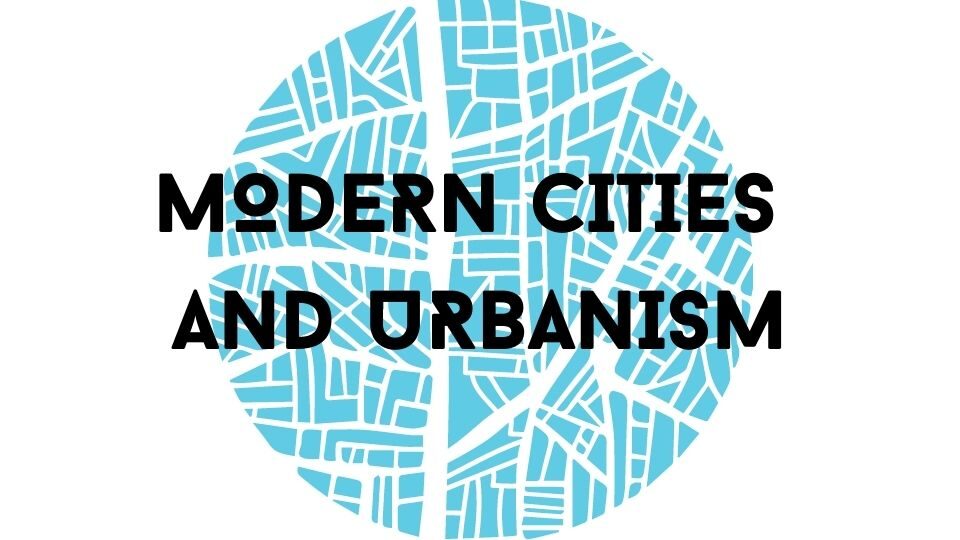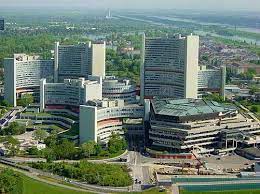QUESTIONS:
Is Vienna a global city as described by Sassen and Castells? How has globalization impacted the development of the city in terms of the usage of space and social cohesion?
_ _ _ _ _ _ _ _ _ _ _ _ _ _ _ _ _ _ _ _ _ _ _ _ _ _ _ _ _ _ _ _ _ _ _ _ _ _
DISCUSSION OF SOURCES, DATA AND ANALYSIS:
For centuries, Vienna has been a center for economic, political and cultural exchange between Eastern and Western Europe. The rise of multinational enterprises in the last century, however, has changed the dynamics of exchange among regions and cities. What is more important to centrality than geographical location in an era of globalization is the integration of a city into the international networks of capital, people, goods, and information. Cities highly integrated in this regard are referred to as global cities, identifiable by their concentrations of international firms and institutions, patterns of urban development, and socio-spatial arrangements of its population. Though Vienna has experienced changes in the usage of space and social cohesion in line with global city theory, researchers raise questions about whether these changes are due to globalization, as opposed to “Europeanization” (Musil 2013, 150), and how the city’s historic networks, as opposed to contemporary information networks, have impacted Vienna’s global city status.
Vienna was founded as Vindobona, a small military outpost on the northern border of the Roman Empire over 2000 years ago. During the Middle Ages, the city became a center of European trade due to its geographic position (Hatz 2008, 310). The city rose in prominence as the capital of the Austro-Hungarian Empire, making it a center of culture, politics and finance for a large swath of the European continent. The 12 largest Viennese banks established an extensive network of branches across the imperial territory which facilitated the transfer of capital from the wealthier, industrialized northwestern region to the east and southeastern parts of the country (Musil 2013, 154). These banks controlled two thirds of the total share of capital of all banks in the Empire (Weigl 2016, 3). This investment led to the development of the more agrarian regions of the empire, but for Vienna, the growing concentration of capital and flow of foreign direct investment led to the city’s position as a financial gateway between east and west.
Vienna would maintain this status into the 20th century, even after the First World War and fall of the Empire. Though Vienna had lost its previous status as the Empire’s administrative center, the city was able to retain its role as an intermediary between western investors and newly independent eastern and central European economies. Weigl argues that this was due to the western businesses’ preference for providing short-term loans only to the big Austrian banks that they trusted (Weigl 2016, 4). Along with established relationships, Weigl attributes Vienna’s interwar success as a gateway to its high concentration of social capital: the chairmen of the large Viennese banks had familial ties to both western countries and the successor states (Weigl 2016, 8). Nathaniel Rothschild was able to keep Creditanstalt afloat with the help of loans from banking relatives in England and France, while Ferdinand Bloch-Bauer, whose family controlled sugar factories in Prague and the Wiener Bankvereins in Vienna, leaned on his connections to expand sugar factories and secure investment (Weigl 2016, 8). Vienna’s economy, and thus its gateway status, began to experience decline following the stock market crash of 1929, which led to outward migration from the city along with high rates of unemployment and poverty among those who remained (Hatz 2008, 311). The city continued to experience economic difficulties throughout Nazi occupation and the Second World War.
Following the partition of Europe into two competing political zones, Vienna was situated on the “eastern edge of the Western world,” isolated from a large market for products, which hindered its development relative to Western European cities of similar stature (Hatz 2008, 311-12). However, Vienna was able to regain its role as a financial gateway between east and west due to its political neutrality and firms’ knowledge of institutions and market structures beyond the Iron Curtain, similar to its position in the interwar period (Musil 2013, 156). Once the Cold War ended, Vienna became a magnet for foreign investment, and by 1991, foreign inflow investments were twice the level of active outflow investments for Viennese companies (Musil 2009, 257). In 1995, Austria acceded to the European Union, and the concentration of international firms and foreign investment in Vienna continued to grow, especially thanks to the established connections the Viennese market had to Central and Eastern Europe. Vienna became a base of operations for foreign companies seeking access to the newly westernized and emerging economies. During the decade following Austria’s accession, 200,000 new jobs were created in Vienna and some economists called Austria “the biggest winner of the EU-eastern enlargement” (Nissel 2010, 56). Hatz argues that following the EU enlargement of 2007, economic growth and foreign business interest in the city began to stagnate as western companies no longer needed Vienna as a gateway (Hatz 2008, 312). Karreman on the other hand states that Vienna still maintains competitiveness as a financial center because banks headquartered in the city provide crucial links to the central and eastern European markets (Karreman 2009, 264).
As Vienna’s economy became more oriented towards service and information industries within an international network, the city’s urban development has changed as well. Between the 1980s and early 2000s, globalization and de-industrialization led to the loss of over 120,000 jobs in the manufacturing sector and an increase of 124,000 jobs in the service sector (Hatz 2008, 313). The increased importance of the service sector to the economy corresponded with the increased importance of office space. To maximize profits, companies “aspire to spatial proximity and form spatial clusters” (Helbich 2012, 40). In Vienna, with its historic city center and ban on high rise buildings until 1995, the city’s urban planning policy had to manage the tension between preserving its historic image and meeting the “demands of a global metropolis” (Hatz 2008, 313). The resulting compromise was the city’s Master Plan of 2005, which included the recycling of brownfields such as old manufacturing plants within the inner city and the construction of high-rise office buildings away from the city center, which were intended to be new urban centers (Hatz 2008, 315-16). These new centers are concentrated along main traffic axes to the north and south of the city with further development and settlement prevented near protected areas, such as the Wienerwald nature reserve in the southeast (Helbich 2012, 42).
Recently, work by David Do Paco has shown historical precedents for the development of new urban centers around international activity within Vienna. Vienna’s position on the Danube River and capital status attracted global trade, and during the imperial period, Habsburg port cities “permitted the establishment of foreign trading communities with the intention of boosting the trade in that city” (Do Paco 2021, 536). In the 18th century, Ottoman merchants were the largest group of foreigners within the city and concentrated along the river canal and the northern suburb of Leopoldstadt outside of the former military walls (Do Paco 2021, 537). Into the 19th century and following the demolition of the old city walls, Ottoman merchants continued to invest in business in new suburbs which would later become fully-fledged districts in the city.
In contrast with this example of successful integration of foreign population from the 19th century, the city has struggled with socio-spatial segregation in recent decades. While new urban centers enable the city to cater to business interests, Hatz argues that this urban restructuring due to globalization has led to a polarization of society, in line with Sassen’s original global city thesis (Hatz 2009, 485). Less than five percent of the housing available in the settlements nearest to the new centers are public housing apartments and residents are mostly middle class (Hatz 2009, 499). By 2001, 28% of Vienna’s population lived outside of the old city limits (Nissel 2010, 62). The upper and lower classes continue to coexist within the city proper, but along segregated lines.
The increase in foreign investment and rise of the service sector, resulting development of new urban centers away from the city’s historic center and polarization within the city based on class are all markers of the global city, and they are all present in Vienna. The label “global city,” however, may conceal the true level of Vienna’s interconnectedness within the global network. Through analysis of active and passive flows of foreign direct investment in Vienna, Musil found that the city depends on relationships with a high concentration of European global cities and a relatively small number of individual cities (Musil 2009, 264). In the 1990s, approximately two thirds of investments leaving Vienna were concentrated within 250 kilometers of the city (Kiss 2013, 411). In 2005, regions outside of Europe controlled only 4.9% of employees and 7.9% of invested equity capital within the city, with most of its capital inflow from northwestern Europe and North America and outflow towards Eastern Europe (Musil 2013, 150). These patterns of capital flow mirror the city’s historic patterns and role that it has played in Europe for centuries. The logic of globalization alone cannot explain Vienna’s global city status, which is due in part to its historic centrality within the European financial network, as well as to its shifts in urban planning policy to attract global firms.
SOURCES:
Do Paco, David. “A Case of Urban Integration: Vienna’s Port Area and the Ottoman Merchants in the Eighteenth Century.” Urban History 48 (2021): 533-551. doi:10.1017/S096392681900110X
Hatz, Gerhard. “Features and Dynamics of Socio-Spatial Differentiation in Vienna and the Vienna Metropolitan Region.” Journal of Economic and Human Geography 100, no.4 (2009): 485-501. https://doi-org.proxy.library.georgetown.edu/10.1111/j.1467-9663.2009.00554.x
Hatz, Gerhard. “City Profile: Vienna.” Cities 25 (2008): 310-322. doi: 10.1016/j.cities.2008.02.002
Helbich, Marco. “Beyond Postsuburbia? Multifunctional Service Agglomeration in Vienna’s Urban Fringe.” Journal of Economic and Human Geography 103, no.1 (2012): 39-52. DOI:10.1111/j.1467-9663.2011. 00673.x
Karreman, Bas. “Financial Geographies and Emerging Markets in Europe.” Journal of Economic and Human Geography 100, no. 2 (2009): 260-266.
Kiss, Eva. “Review: Robert Musil: Foreign Direct Investment from Vienna in Central and Southeast Europe.” Hungarian Geographical Bulletin 62, no.4 (2013): 409-414.
Musil, Robert. “Global Capital Control and City Hierarchies: An Attempt to Reposition Vienna in a World City Network.” Cities 26 (2009): 255-265. doi: 10.1016/j.cities.2009.07.002
Musil, Robert. “The Evolution of a Global City: Vienna’s Integration into the World City System.” In Globalization and the City: Two Connected Phenomena in Past and Present, ed. Andreas Exenberger, 141-162. Innsbruck: Innsbruck University Press, 2013.
Nissel, Heinz. “Global Capital, Neoliberal Politics and Terrains of Resistance in Vienna.” In Accumulation by Dispossession: Transformative Cities in the New Global Order, ed. Swapna Banerjee-Guha, 55-73. New Delhi: SAGE Publications India, 2010.
Weigl, Andreas. “Beggar-Thy-Neighbour vs. Danube Basin Strategy: Habsburg Economic Networks in Interwar Europe.” Religions 7, no.129 (2016): 1-12.


One Reply to “Vienna: Global Cities”
Comments are closed.